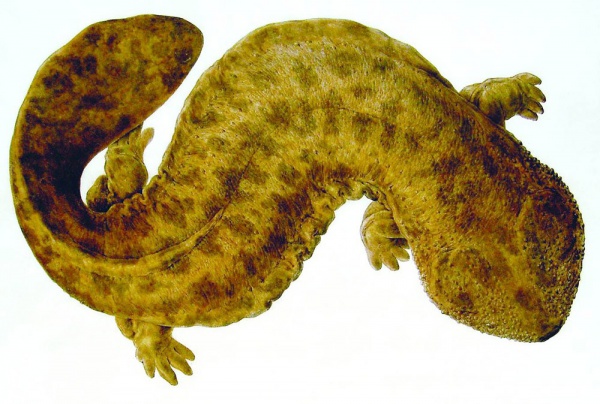Facts About Japanese giant salamander
The Japanese giant salamander, scientifically known as Andrias japonicus, is an extraordinary amphibian indigenous to Japan. Ranking as the world's third-largest salamander, these creatures can grow nearly 1.5 meters in length. They belong to the Cryptobranchidae family, which also includes the Chinese giant salamander, the South China giant salamander, an undescribed species from eastern China, and the hellbender.
The Japanese giant salamanders are primarily found in the rivers of southwestern Japan, where they occasionally interbreed with Chinese giant salamanders. They are characterized by their mottled brown and black skin, which provides excellent camouflage. Other notable features include their small, lidless eyes and wide mouths. Unique skin folds around their necks aid in respiration by allowing them to absorb oxygen directly through their skin.
One way to differentiate them from their Chinese counterparts is by examining the pattern of bumps on their heads and throats. These salamanders are entirely aquatic and nocturnal, thriving in clear, cool, oxygen-rich water.
In terms of diet, Japanese giant salamanders feed on insects, frogs, and fish. Due to their poor eyesight, they rely on special sensory cells to detect vibrations in the water. If threatened, they can release a strong-smelling substance to deter predators. With a slow metabolism, they can survive for weeks without food and have been known to live up to 80 years in the wild.
During the mating season, they migrate to mountain streams to spawn. Large males guard the nests and exhibit a notable degree of parental care, which is quite fascinating.
Despite their resilience, Japanese giant salamanders face significant threats from pollution, habitat destruction, and overharvesting. These challenges have led to their classification as Near Threatened by the IUCN and their inclusion in CITES Appendix I.
Culturally, these salamanders hold a special place in Japan. They have been protected as a Special Natural Monument since 1952 and feature prominently in Japanese art and mythology. Some regions even hold festivals in their honor. Conservation efforts, including captive breeding programs and habitat protection, are ongoing to ensure their survival.
